Global Navigation

Top Navigation
Left Navigation
- Quick Links
- Overview
- Treatments
- Sampling
Content
This study is being conducted at three sites, one in each of the three prairie provinces. A large number of 2m x 2m plots were established at each site in 2007, and each plot receives a different combination of warming, precipitation, and defoliation treatments. The plots are repeatedly sampled to determine the effects of these treatments on above- and belowground rangeland function.
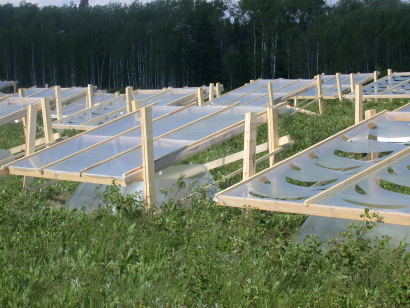
Three different types of experimental treatments are applied to the plots: warming, precipitation, and defoliation.
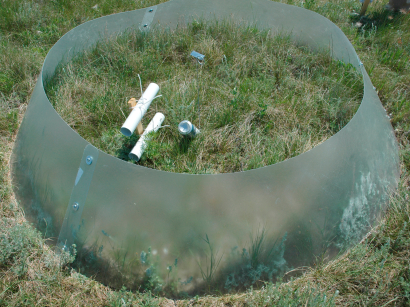
Warming is accomplished using open-top chambers (OTCs), a standard method used in climate change studies. The OTCs act like miniature greenhouses, warming the air within approximately 2-4°C.
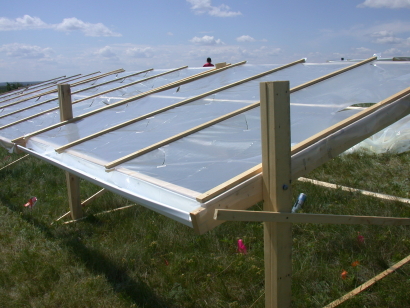
Precipitation is reduced using rainout shelters. These are large covers constructed using greenhouse-grade polyethylene. Slits in the polyethylene allow a small portion (~25%) of rainfall through while diverting the majority. Control plots have shelters with large holes to allow all rainfall through.
Beginning in 2008, some Alberta plots will have the rainfall they receive supplemented by 75% so we can examine the effects of increased precipitation on this rangeland system.
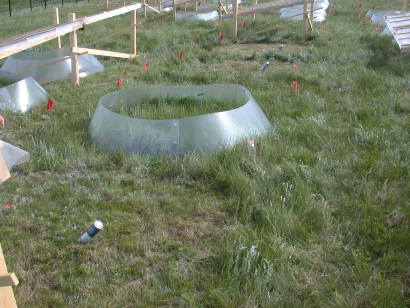
Mechanical defoliation is used instead of grazing as grazers would not necessarily pay attention to our treatment combinations. Additionally, much of our experimental infrastructure is fragile. Plots are defoliated using a combination of hand-clipping and mowing, and receive either low-intensity, high-intensity, or no defoliation.
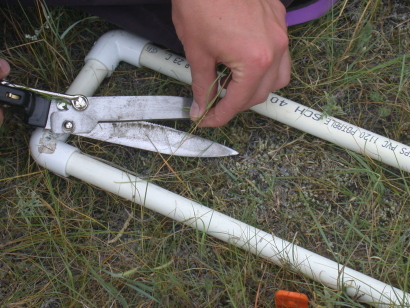
We try to balance maximizing sampling intensity with minimizing disturbance when sampling the experimental plots. A variety of non-destructive sampling takes place throughout the growing season, with destructive samples collected at peak biomass (late July). Dataloggers are used to record above- and belowground environmental data.